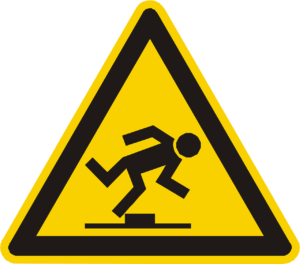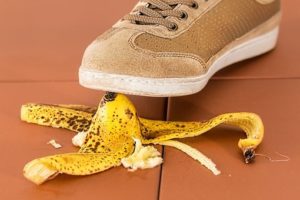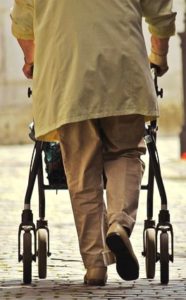 No one likes to fall. It hurts! Falling can also lead to broken bones, head injuries, hospitalizations and more. The U.S. Center for Disease Control and Prevention shows falls result in more than 2.8 million yearly emergency room treatments. This includes over 800,000 hospitalizations and 27,000 deaths, with people over 65 being the largest group affected.
No one likes to fall. It hurts! Falling can also lead to broken bones, head injuries, hospitalizations and more. The U.S. Center for Disease Control and Prevention shows falls result in more than 2.8 million yearly emergency room treatments. This includes over 800,000 hospitalizations and 27,000 deaths, with people over 65 being the largest group affected.
Even without injury, the fear of falling can heavily impact quality of life. Older adults commonly limit their activities and social interaction, which could further intensify their falling risk. Being inactive leads to loss of muscle strength and balance, and social isolation can initiate depression and anxiety.
The good news is falls are not inevitable – even as we age! Falls can be prevented through basic lifestyle adjustments and evidence-based fall prevention programs.
Tips to Reduce Risks of Falling
- Good Housekeeping –
 Cleaning and keeping a tidy house is the most basic way of preventing falls. It includes things such as cleaning spills immediately and marking wet areas; mopping or sweeping debris from floors; removing obstacles and clutter from walkways; securing mats, rugs and carpets so they lay flat; using nonslip mats in the tub/shower; closing cabinets and drawers; covering or relocating cables and cords in walkways; keeping work and walkway areas well lit.
Cleaning and keeping a tidy house is the most basic way of preventing falls. It includes things such as cleaning spills immediately and marking wet areas; mopping or sweeping debris from floors; removing obstacles and clutter from walkways; securing mats, rugs and carpets so they lay flat; using nonslip mats in the tub/shower; closing cabinets and drawers; covering or relocating cables and cords in walkways; keeping work and walkway areas well lit. - Staying Active – Physical activity plays a huge role in fall prevention. Various activities such as walking, water workouts, tai chi, yoga, gardening and stretching exercises reduce the risk of falls by improving strength, balance, coordination and flexibility.
- Flooring – Slippery, cluttered or uneven floors can lead to falls. Repairing or replacing damaged floors and loose carpets, securing loose mats, making sure walking surfaces are clean and free of hazards and walk ways adequately lit can make flooring more fall resistant. When outdoors, also be aware of changes in surface level or slopes, holes and cracks, and bad weather or conditions that make surfaces slippery.

- Footwear – Shoes with high heels or slick soles, floppy slippers or walking in stocking feet can lead to slips, stumbles and falls. Properly fitting footwear along with shoes with anti-slip properties improve safety.
- Lighting – Keep your home brightly lit so potential tripping hazards can be easily seen. Bed-side lamps and night lights are great benefits in bedrooms, bathrooms and hallways. Glow-in-the dark or illuminated switches in areas where light switches are not near room entrances can be beneficial as well.
- Managing Medication – Medication side-effects and interactions can cause sleepiness, dizziness or other symptoms that can play a role in the risk of falling. Work with your doctor to determine possible modifications.

- Using Assistive Devices – Assistive devices can help with steadiness. Examples include a cane or walker, hand rails for stairways, nonslip treads for bare-wood steps, raised toilet seat, grab bars for shower and tub, a hand-held shower nozzle and tub bench for bathing while sitting down.
- Participating in Fall Prevention Programs – Check for evidence-based programs that help with the psychological as well as physical side of fall prevention. “A Matter of Balance” is a fall prevention program offered by some CSU Extension offices. Check with your local CSU Extension office or Senior Center for programs in your area.
For more information:
- National Safety Council
- Mayo Clinic
- Fall Prevention Center of Excellence
- Health Care Associates
- National Center for Biotechnology Information


Joy, I agree with you that the fear of falling really impacts the lives of so many seniors, which in turn increases their risk of falling in the future. Great article.
Great information, Joy! Thanks for the safety reminders and links!